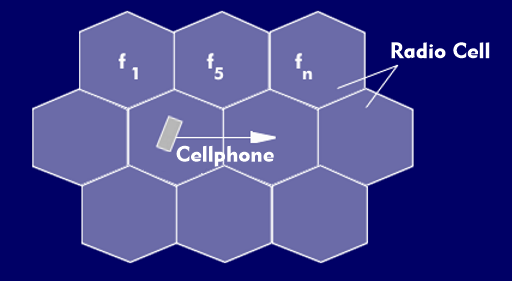handover (HO)
Handover (HO) or handoff is a handoff procedure in cellular networks and in WLANs that is used during active communication and starts to function when the cell phone moves from one radio cell to a neighboring one during a call. As soon as the receiving device leaves the transmission range of one base station and enters that of the next base station, handover begins. Communication continues without interruption even though the transmitters of the first and next base stations are transmitting on different frequencies.
The handover is triggered when the field strength at the mobile station or the WLAN client does not permit faultless transmission. The time for the handover is determined both by the received field strength and by evaluating a 4 kHz pilot tone.
The handover procedure during handover
The handover procedure takes place within 5 ms to 10 ms and can be performed from the base station, but also from the mobile station. In mobile networks, the handover is performed from the base station, which is then referred to as a centralized handover; in DECT, a decentralized handover is used, which is controlled from the mobile station. This procedure is also referred to as Mobile Controlled Handover (MCHO).
Handover can take place within a radio cell (intracell HO), by switching to a different radio frequency, or between two adjacent radio cells (intercell HO) controlled from a base station. In addition, handover can occur between radio cells managed by the same or by different radio base controllers(BSCs), which in turn are connected to different mobile switching centers(MSCs). Newly specified, but not yet implemented anywhere, is inter- PLMN-HO, i.e., handover between different network operators.
In terms of the handover procedure, a distinction is made between hard handover and soft handover. In hard handover, the mobile stationchecks the connection status to the existing base station at regular intervals. At the same time, it searches for neighboring base stations and estimates their transmission quality. If another base station has a better signal-to- noise ratio (S/N). After the mobile station has exchanged information with the base station, the latter terminates its connection and the mobile station synchronizes to the new base station. Before communication takes place via the new base station, the connection to the old one is completely disconnected. The mobile station is always connected to only one base station.
The situation is different with soft handover. In this method, the downlink data is transmitted simultaneously via the downlinks of several radio cells synchronously. The received signal is formed from the sum of the received signals. Soft handover is used for UMTS, among other things.
If uninterrupted handover when switching from one cellular cell to another is associated with a change of mobile communications provider, this is referred to as roaming.

